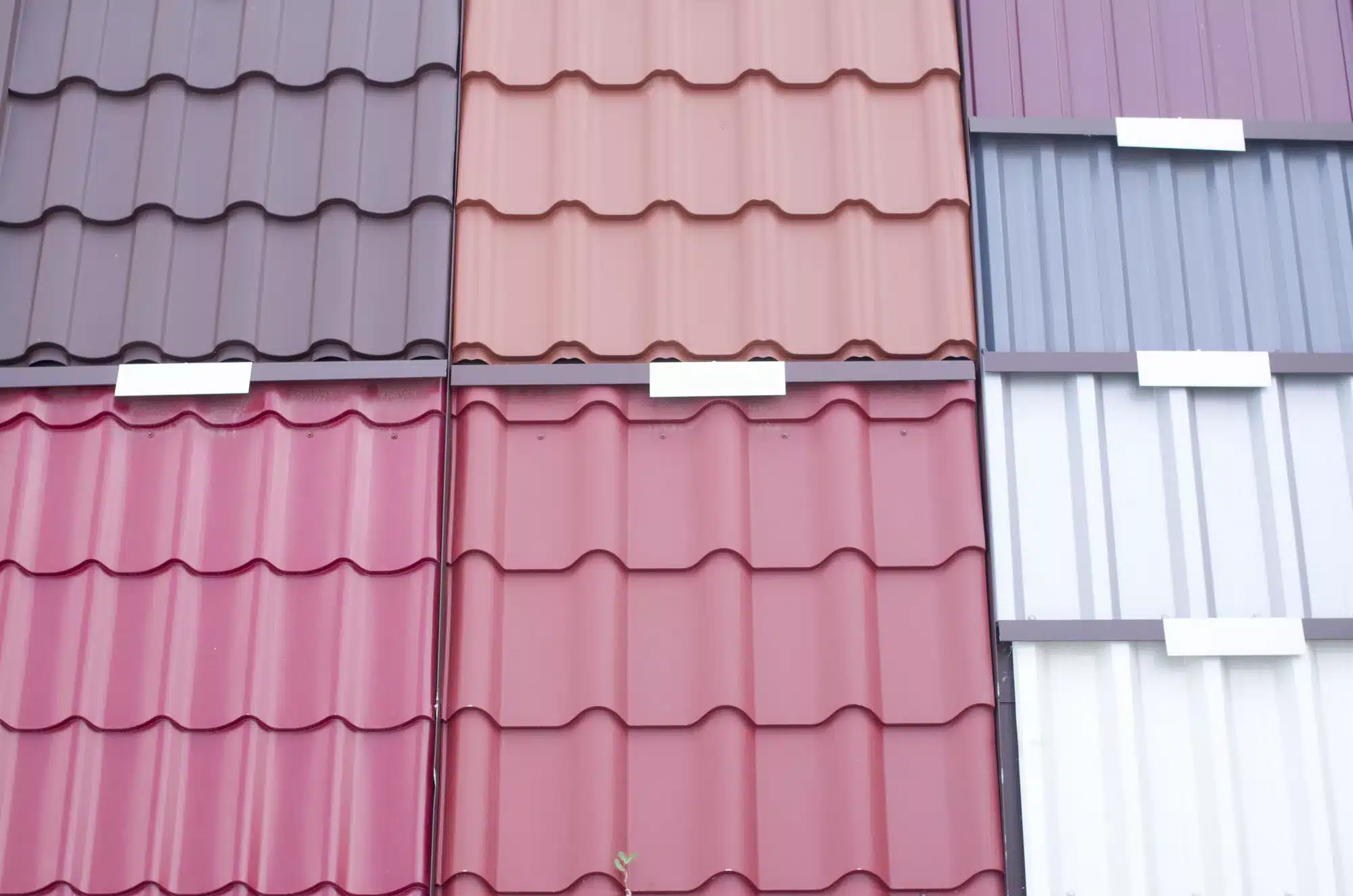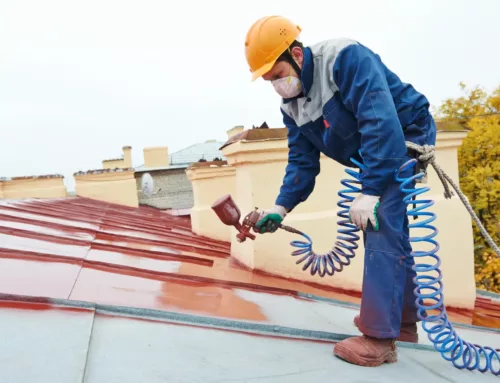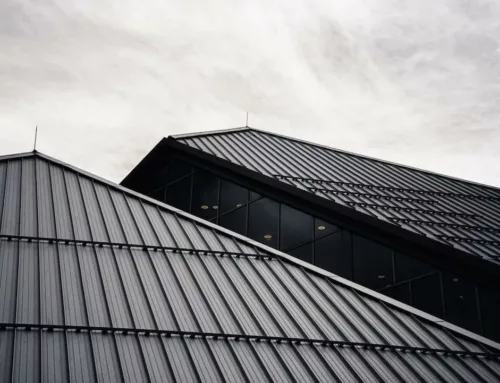It’s a solid choice, going with a metal roof. Durability that scoffs at the passing of decades and an elegance that doesn’t fade—those are promises made by this sturdy overhead guard. You’re right to wonder how long does a metal roof last. Let me lay it out: these metallic shields can soldier on for 40 to 70 years, way beyond what their asphalt-shingled cousins can handle.
This isn’t just about longevity; it’s also about savings in energy bills and fewer headaches over repairs. Metal roofs offer resistance against high winds and UV rays alike while reflecting radiant heat away from your home. So buckle up—you’re set to learn not only how they stand firm against nature but also tips on keeping them atop your castle for as long as possible.
Table Of Contents:
- Metal Roof Longevity: What Homeowners Can Expect
- Advantages and Disadvantages of Choosing a Metal Roof
- Cost Analysis and Insurance Incentives for Metal Roofs
- Maintenance Tips to Prolong Your Metal Roof’s Life
- Installation Essentials for Maximizing Metal Roof Lifespan
- Customization Options for Aesthetic Appeal and Functionality
- Geographic Impact on Lifespan
- Real-Life Performance Stories
- Conclusion
Metal Roof Longevity: What Homeowners Can Expect
Thinking about a roof upgrade? You might want to consider metal roofing. It’s not just for barns or commercial buildings anymore. A properly installed metal roof can last as long as your mortgage – and sometimes even longer.
The Durability of Metal Roofs Against the Elements
Metal roofs laugh in the face of Mother Nature’s tantrums. They’re like the superheroes of roofing materials, withstanding wind, rain, and harmful UV rays without breaking a sweat. But it’s not all about brawn; these roofs are smart too. With their reflective surfaces bouncing back solar radiation, they help keep your cooling costs down by 10-25%. Talk about being cool under pressure.
A well-maintained metal roof lasts way beyond its years – we’re talking an average life expectancy that outshines traditional asphalt shingles by decades. And while heavy rain might drum up a bit more noise than you’re used to with asphalt shingles, think of it as nature’s own white noise machine.
Comparing Lifespans: Metal vs. Traditional Roofing Materials
When pitted against classic choices like asphalt shingle roofs or clay tiles, metal comes out on top every time – kind of like how a tortoise beats the hare but much less slow-paced and far more weather-resistant. Where most shingle roofs wave the white flag after 12-20 years tops, metal rooftops proudly stand tall for anywhere between 40 to 70 glorious years.
If longevity had a fan club president though, copper would be wearing that crown; some copper roofs have been known to celebrate centennial birthdays still looking sharp. Zinc isn’t far behind either in this marathon race against time and elements.
Advantages and Disadvantages of Choosing a Metal Roof
When you’re in the market for a new roof, metal is like that reliable friend who’s always ready to save the day. With energy efficiency through the roof—pun intended—metal roofs can slash cooling costs by up to 25%. But before you jump on this shiny bandwagon, let’s talk turkey about what it really means to have one sitting pretty atop your home.
Pros and Cons of Metal Roofs for Your Home
Metal roofing isn’t just tough; it laughs in the face of harsh weather conditions. It can stand up against heavy rain without batting an eye and doesn’t get ruffled by high winds or UV rays. And while asphalt shingles are more likely to send out an SOS during a strong storm, metal roofs will be standing tall after decades—a whopping 40-70 years.
But hey, no hero is perfect. During hailstorms, metal roofs can sound like a teen rock band rehearsing upstairs—it gets noisy. Also, if those pesky tree branches decide they want some action too? Scratches might make your durable material look less than stellar over time.
You also need to consider installation because if not done right—you guessed it—your dreamy long-lasting roof could turn into an expensive nightmare faster than lightning strikes (which won’t harm your sturdy metal cover but still). So finding quality materials, color match expertise with concealed fasteners options are key when customizing your new crown jewel.
The upfront cost might give you pause as well since we’re talking more dollars than going with traditional asphalt shingle roofing materials initially. Yet think long-term: these metallic wonders offer significant savings down the line—not only on maintenance but possibly even getting insurance discounts due to their fortress-like nature.
While clay tile struts around boasting its own impressive lifespan stats and environmental brownie points go towards other eco-friendly choices; when it comes down brass tacks—or should I say copper roofs—they all bow down eventually before mighty steel and aluminum overlords in terms of life expectancy. The moral here? A properly installed metal roof keeps both villains at bay AND coins jingling happily in your pocket over time.
Key Takeaway:
Metal roofs are the unsung heroes of home protection, offering huge savings and a lifespan of 40-70 years. They laugh off harsh weather but watch out for noise during hailstorms and make sure installation is spot on to avoid costly mistakes. Long-term, they keep your wallet happy with lower maintenance costs and potential insurance discounts.
Cost Analysis and Insurance Incentives for Metal Roofs
When it comes to the roof over your head, a metal one might just be worth its weight in gold. Sure, you’ll shell out more at the outset compared to traditional shingle roofs. But here’s where things get shiny: over time, these sturdy tops can offer some serious cost benefits.
Metal roofs aren’t just tough; they’re financial warriors in disguise. With an impressive lifespan that ranges between 40 and 70 years—far outstripping the average life expectancy of their asphalt counterparts—it’s like choosing a car that could last until your grandkids are driving.
The perks don’t stop with longevity though. Let’s talk energy efficiency. By reflecting radiant heat instead of absorbing it like an asphalt shingle roof would do on a scorching summer day, metal roofs help keep cooling costs down by as much as 25%. That means less work for your air conditioner and more money staying cozy inside your wallet.
The Durability of Metal Roofs Against the Elements
No matter if Mother Nature throws heavy rain or high winds at them, properly installed metal roofing materials stand firm when other materials might wave a white flag—or lose shingles trying to hold ground during severe weather conditions.
A routine maintenance check-up now and then is all most long-lasting metals need to stay fit as fiddles—a far cry from constantly repairing water damage or fixing wind-damaged tree branches off less durable surfaces.
Comparing Lifespans: Metal vs Traditional Roofing Materials
Besides living longer than rock stars’ careers, metal roofs laugh in the face of weather conditions that make short work of lesser materials like clay tiles or wood shakes which have shorter lifespans under harsh UV rays exposure or lightning strikes hazard zones—another reason insurance companies sometimes give discounts for homes sporting this kind of metallic armor because let’s face it—they’re betting on winners too.
Key Takeaway:
Shelling out for a metal roof now might hit your wallet, but you’ll laugh all the way to the bank later. With lifespans up to 70 years and energy savings of about 25%, they’re financial warriors against weather wear-and-tear. Plus, insurers often favor them with discounts—another win for your long-term budget.
Maintenance Tips to Prolong Your Metal Roof’s Life
Picture this: you’ve just installed a shiny new metal roof. It’s tough, it looks sharp, and hey – it might even outlive you if you treat it right. So grab your ladder and let’s talk shop about keeping that roof over your head in tip-top shape for decades.
Caring for Metal Roofs: The Basics
Your metal roof is like a knight’s armor; both are strong but need regular care to keep protecting what’s underneath. To start off simple, make sure those gutters stay clear of leaves and debris. Clogged gutters can lead to water damage faster than a duck on a June bug. And while we’re at it, watch out for tree branches that could scrape against the roofing material during high winds; they’re more annoying than mosquitos at a barbecue.
Routine maintenance should include checking for any signs of wear or tear such as scratches or dents which can occur from severe weather events. Even though metal roofs scoff at wind damage compared to their cousin the asphalt shingle roof, they still feel the sting of Mother Nature sometimes.
Inspections Are Key
Just like going to the doc keeps us kicking longer, regular inspections will extend your metal roof’s life expectancy way beyond average lifespans. An annual look-see by your friendly neighborhood roofing contractor, especially after heavy rain or storms ensures small issues don’t turn into big problems down the road.
An experienced eye may catch subtle clues pointing towards potential leaks before they become indoor waterfalls—and nobody wants an impromptu shower inside their living room.
The Nitty-Gritty Details
We all love saving money where we can—did someone say insurance discounts? A well-maintained metal roof not only lasts long but also might snag you some sweet savings with insurers who recognize its durability against elements like lightning strikes and fire hazards.
Remember how I said treating your metal properly could save money? Well turns out taking good care of that shining crown atop your home helps bring down cooling costs too thanks to energy efficiency gains—a bonus win when summer heat tries turning homes into ovens.
Key Takeaway:
Keep your metal roof in prime condition by cleaning gutters, trimming nearby trees, and looking out for wear. Regular check-ups can prevent costly damage and even score you insurance discounts.
Metal roofs are tough cookies but need love too. Treat yours right with annual inspections to catch issues early, avoid surprise leaks, and enjoy energy savings that keep your wallet happy.
Installation Essentials for Maximizing Metal Roof Lifespan
To get the most out of your metal roof, it’s not just about choosing top-notch materials; proper installation is key. It’s like a dance between quality products and skilled craftsmanship – both have to be in sync to put on a good show.
The Importance of Proper Installation for Metal Roofs
A metal roof can shield your home like a knight in shining armor against whatever Mother Nature throws at you. But if that armor isn’t strapped on right, well, let’s just say leaks will be the least of your worries. Expert roofing contractors understand this all too well and never cut corners when installing these durable defenders.
Sure, metal roofs boast an impressive average life expectancy ranging from 40 to even 70 years. That’s generations worth of protection when compared with traditional asphalt shingles which may wave the white flag after merely 12-20 years under similar conditions. But here’s the kicker: without precise installation techniques using concealed fasteners or standing seam systems – think secret weapons for longevity – you might as well toss those extra decades down the drain.
Making Sure Every Shingle Is Perfectly Placed
Imagine trying to piece together an intricate puzzle but some pieces don’t quite fit – frustrating, right? That’s what improper alignment during metal roof installations feels like. Each panel needs to lock into its neighbor flawlessly; otherwise wind damage becomes more likely than finding money on the street. And we’re talking high winds capable of sending things airborne faster than a toddler tossing toys out of frustration.
Routine maintenance gets easier when everything is installed correctly from get-go because it allows homeowners to spot potential issues before they snowball into major problems causing water damage or requiring expensive repairs or full-blown replacements way ahead of schedule.
Why Every Nail and Sealant Matters
If there was ever time precision mattered most; it would be while securing each portion of your shiny new rooftop fortress against relentless weather conditions day in and day out every year henceforth. Skilled installers use quality materials that make sure no corner lifts up inviting leaks inside during heavy rain nor any gap widens giving cold drafts free entry rights.
Insurance discounts? They’re often within reach thanks largely due part sturdy construction methods ensuring resilience amidst severe weather thus potentially saving money not only via energy efficiency but also through reduced premiums over time proving yet again how much properly installed long-lasting roofs offer beyond mere sheltering capabilities—they’re investments yielding returns far exceeding their initial costs.
Key Takeaway:
To keep your metal roof in top shape for decades, make sure it’s installed right. Think of it as a puzzle where every piece must fit perfectly to protect against leaks and wind damage.
Choosing skilled contractors who use quality materials can save you big bucks on repairs and insurance down the line, not to mention keeping your home cozy and dry.
Customization Options for Aesthetic Appeal and Functionality
When it comes to metal roofing, homeowners aren’t just choosing a hat for their house; they’re selecting the crown that offers both protection and style. With standing seam’s rise in popularity, this metal marvel combines sleek lines with serious durability. Let’s not forget those concealed fasteners—out of sight but never out of mind—they keep your roof smooth and seamless against whatever Mother Nature throws its way.
Different Types of Roofing Materials
The world of metal roofs is vast with choices galore. From copper’s ageless appeal to zinc’s understated elegance, there are enough options to satisfy even the pickiest palette. And let’s talk about color match—the chameleon skill of your roof playing twinzie with any hue you throw at it. Now if we speak numbers, these metallic beauties boast a lifespan making asphalt shingles look like mere mortals—with an average life expectancy stretching between 40-70 years.
But hey, variety is the spice of life—and roofs. You’ve got exposed fasteners adding character without compromising on performance. Or perhaps you lean towards the minimalist vibe? Then behold: different types where clean lines rule supreme.
Standing Seam Popularity
Climbing up in homeowner preferences like vines on trellises is standing seam roofing—a clear favorite due to its winning combination: architectural compatibility meets choice overload (in colors). Imagine reducing cooling costs by up to 25%, all while looking chic—that’s what this hero in disguise can do.
Color Matching Challenges
Finding that perfect shade during repairs or extensions might seem tougher than picking your next Netflix binge—but fret not. The key lies in embracing contrasts or coordinating complements rather than hunting down an exact match from yesteryear palettes.
To ensure longevity pairs well with looks that kill, remember proper installation stands as non-negotiable—it gives ‘staying power’ a whole new meaning when facing off high winds or heavy rain onslaughts.
Learn more about color matching and if you can paint metal roofing in our blog.
Geographic Impact on Lifespan
Ever wonder why metal roofs in Florida might outlast a teenager’s music phase? Blame it on the sunshine and storms. In areas with heavy snowfall, high-wind zones, or frequent hailstorms, your roof gets tested like it’s finals week – every week. Metal roofing material stands up to these challenges better than most of its classmates.
Climates that Affect Roof Longevity
Metal roofs are like the all-weather tires of the roofing world – they’re built for endurance. They shrug off UV rays without breaking a sweat and laugh in the face of strong storms. But let’s be real; not even metal is completely immune to Mother Nature’s mood swings. Coastal conditions can bring salt spray into play, accelerating corrosion if you skimped on protective coatings.
In contrast, asphalt shingles often find themselves buckling under pressure—literally—in hot sunny climates where relentless sun bakes them until they’re ready to crackle at just 15-20 years old.
The Sunny Side: How Hot Climates Play Out
If you live somewhere hotter than a stolen jalapeño, consider this: Metal roofs offer an escape from sky-high cooling costs by reflecting radiant heat away from your home rather than absorbing it like that sponge sitting next to your kitchen sink. And while lightning strikes may have you thinking twice about going full-metal jacket on your house-topper; fear not. Contrary to tall tales around campfires and water coolers alike – metal surfaces aren’t magnetizing bolts from above any more than other materials would.
When Storms Strike: Resistance Against Weather Extremes
Talking about resistance — when severe weather sends tree branches flying faster than UFO conspiracy theories after an Air Force test flight gone wrong – well-installed metal roofs tend not only stand their ground but could save money over time compared with replacing shingle roofs post-storm-pummeling.
Key Takeaway:
Metal roofs can outlast a teen’s music phase, especially in sunny and stormy places. They’re tough against the elements but watch out for coastal salt spray that speeds up corrosion. And don’t sweat lightning myths; metal roofs aren’t more likely to attract strikes than others.
In hot climates, metal roofs reflect heat like champs, cutting cooling costs without drawing extra lightning bolts from the sky. When severe weather hits, they stand strong – saving you cash on repairs compared with shingle roof damage.
Conclusion
Know this: a metal roof stands the test of time. Understand this: proper care means fewer worries down the road. Remember this: it’s about safeguarding your home and pocket.
We’ve journeyed through durability, cost-effectiveness, and maintenance—all critical in knowing how long does a metal roof last. These steadfast covers can brave Kansas City’s whims for up to 70 years with grace.
Embrace energy savings; they’re real with metal roofs reflecting heat like champions. Tackle routine checks—they’ll fend off potential troubles effectively.
Acknowledge installation expertise—it’s crucial for longevity. And if you play your cards right, insurance discounts might just sweeten the deal further.
In all things roofing, remember that choices today shape protection tomorrow—and every day after that—for homes under Kansas skies.
Interested in learning more? Contact us today and get a free estimate!







